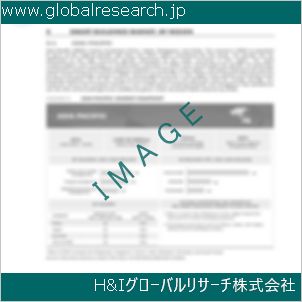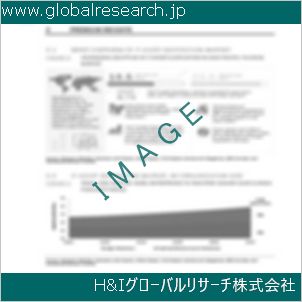Table of Contents
1 Industry Overview of Haematite
1.1 Definition and Specifications of Haematite
1.1.1 Definition of Haematite
1.1.2 Specifications of Haematite
1.2 Classification of Haematite
1.3 Applications of Haematite
1.3.1 Nuclear Application
1.3.2 Non-Nuclear Application
1.4 Industry Chain Structure of Haematite
1.5 Industry Overview and Major Regions Status of Haematite
1.5.1 Industry Overview of Haematite
1.5.2 Global Major Regions Status of Haematite
1.6 Industry Policy Analysis of Haematite
1.7 Industry News Analysis of Haematite
2 Manufacturing Cost Structure Analysis of Haematite
2.1 Raw Material Suppliers and Price Analysis of Haematite
2.2 Equipment Suppliers and Price Analysis of Haematite
2.3 Labor Cost Analysis of Haematite
2.4 Other Costs Analysis of Haematite
2.5 Manufacturing Cost Structure Analysis of Haematite
2.6 Manufacturing Process Analysis of Haematite
3 Technical Data and Manufacturing Plants Analysis of Haematite
3.1 Capacity and Commercial Production Date of Global Haematite Major Manufacturers in 2023
3.2 Manufacturing Plants Distribution of Global Haematite Major Manufacturers in 2023
3.3 R&D Status and Technology Source of Global Haematite Major Manufacturers in 2023
3.4 Raw Materials Sources Analysis of Global Haematite Major Manufacturers in 2023
4 Capacity, Production and Revenue Analysis of Haematite by Regions, Types and Manufacturers
4.1 Global Capacity, Production and Revenue of Haematite by Regions 2019-2024
4.2 Global and Major Regions Capacity, Production, Revenue and Growth Rate of Haematite 2019-2024
4.3 Global Capacity, Production and Revenue of Haematite by Types 2019-2024
4.4 Global Capacity, Production and Revenue of Haematite by Manufacturers 2019-2024
5 Price, Cost, Gross and Gross Margin Analysis of Haematite by Regions, Types and Manufacturers
5.1 Price, Cost, Gross and Gross Margin Analysis of Haematite by Regions 2019-2024
5.2 Price, Cost, Gross and Gross Margin Analysis of Haematite by Types 2019-2024
5.3 Price, Cost, Gross and Gross Margin Analysis of Haematite by Manufacturers 2019-2024
6 Consumption Volume, Consumption Value and Sale Price Analysis of Haematite by Regions, Types and Applications
6.1 Global Consumption Volume and Consumption Value of Haematite by Regions 2019-2024
6.2 Global and Major Regions Consumption Volume, Consumption Value and Growth Rate of Haematite 2019-2024
6.3 Global Consumption Volume and Consumption Value of Haematite by Types 2019-2024
6.4 Global Consumption Volume and Consumption Value of Haematite by Applications 2019-2024
6.5 Sale Price of Haematite by Regions 2019-2024
6.6 Sale Price of Haematite by Types 2019-2024
6.7 Sale Price of Haematite by Applications 2019-2024
6.8 Market Share Analysis of Haematite by Different Sale Price Levels
7 Supply, Import, Export and Consumption Analysis of Haematite
7.1 Supply, Consumption and Gap of Haematite 2019-2024
7.2 Global Capacity, Production, Price, Cost, Revenue, Supply, Import, Export and Consumption of Haematite 2019-2024
7.3 USA Capacity, Production, Price, Cost, Revenue, Supply, Import, Export and Consumption of Haematite 2019-2024
7.4 EU Capacity, Production, Price, Cost, Revenue, Supply, Import, Export and Consumption of Haematite 2019-2024
7.5 China Capacity, Production, Price, Cost, Revenue, Supply, Import, Export and Consumption of Haematite 2019-2024
7.6 Japan Capacity, Production, Price, Cost, Revenue, Supply, Import, Export and Consumption of Haematite 2019-2024
8 Major Manufacturers Analysis of Haematite
8.1 Manufacturer One
8.1.1 Company Profile
8.1.2 Product Picture and Specifications
8.1.2.1 Type I
8.1.2.2 Type II
8.1.2.3 Type III
8.1.3 Capacity, Production, Price, Cost, Gross and Revenue
8.1.4 Contact Information
8.2 Manufacturer Two
8.2.1 Company Profile
8.2.2 Product Picture and Specifications
8.2.2.1 Type I
8.2.2.2 Type II
8.2.2.3 Type III
8.2.3 Capacity, Production, Price, Cost, Gross and Revenue
8.2.4 Contact Information
8.3 Manufacturer Three
8.3.1 Company Profile
8.3.2 Product Picture and Specifications
8.3.2.1 Type I
8.3.2.2 Type II
8.3.2.3 Type III
8.3.3 Capacity, Production, Price, Cost, Gross and Revenue
8.3.4 Contact Information
8.4 Manufacturer Four
8.4.1 Company Profile
8.4.2 Product Picture and Specifications
8.4.2.1 Type I
8.4.2.2 Type II
8.4.2.3 Type III
8.4.3 Capacity, Production, Price, Cost, Gross and Revenue
8.4.4 Contact Information
8.5 Manufacturer Five
8.5.1 Company Profile
8.5.2 Product Picture and Specifications
8.5.2.1 Type I
8.5.2.2 Type II
8.5.2.3 Type III
8.5.3 Capacity, Production, Price, Cost, Gross and Revenue
8.5.4 Contact Information
…
9 Marketing Trader or Distributor Analysis of Haematite
9.1 Marketing Channels Status of Haematite
9.2 Traders or Distributors with Contact Information of Haematite by Regions
9.3 Ex-work Price, Channel Price and End Buyer Price Analysis of Haematite
9.4 Regional Import, Export and Trade Analysis of Haematite
10 Industry Chain Analysis of Haematite
10.1 Upstream Major Raw Materials Suppliers Analysis of Haematite
10.1.1 Major Raw Materials Suppliers with Contact Information Analysis of Haematite
10.1.2 Major Raw Materials Suppliers with Supply Volume Analysis of Haematite by Regions
10.2 Upstream Major Equipment Suppliers Analysis of Haematite
10.2.1 Major Equipment Suppliers with Contact Information Analysis of Haematite
10.2.2 Major Equipment Suppliers with Product Pictures Analysis of Haematite by Regions
10.3 Downstream Major Consumers Analysis of Haematite
10.3.1 Major Consumers with Contact Information Analysis of Haematite
10.3.2 Major Consumers with Consumption Volume Analysis of Haematite by Regions
10.4 Supply Chain Relationship Analysis of Haematite
11 Development Trend of Analysis of Haematite
11.1 Capacity, Production and Revenue Forecast of Haematite by Regions and Types
11.1.1 Global Capacity, Production and Revenue of Haematite by Regions 2024-2029
11.1.2 Global and Major Regions Capacity, Production, Revenue and Growth Rate of Haematite 2024-2029
11.1.3 Global Capacity, Production and Revenue of Haematite by Types 2024-2029
11.2 Consumption Volume and Consumption Value Forecast of Haematite by Regions, Types and Applications
11.2.1 Global Consumption Volume and Consumption Value of Haematite by Regions 2024-2029
11.2.2 Global and Major Regions Consumption Volume, Consumption Value and Growth Rate of Haematite 2024-2029
11.2.3 Global Consumption Volume and Consumption Value of Haematite by Types 2024-2029
11.2.4 Global Consumption Volume and Consumption Value of Haematite by Applications 2024-2029
11.3 Supply, Import, Export and Consumption Forecast of Haematite
11.3.1 Supply, Consumption and Gap of Haematite 2024-2029
11.3.2 Global Capacity, Production, Price, Cost, Revenue, Supply, Import, Export and Consumption of Haematite 2024-2029
11.3.3 USA Capacity, Production, Price, Cost, Revenue, Supply, Import, Export and Consumption of Haematite 2024-2029
11.3.4 EU Capacity, Production, Price, Cost, Revenue, Supply, Import, Export and Consumption of Haematite 2024-2029
11.3.5 China Capacity, Production, Price, Cost, Revenue, Supply, Import, Export and Consumption of Haematite 2024-2029
11.3.6 Japan Capacity, Production, Price, Cost, Revenue, Supply, Import, Export and Consumption of Haematite 2024-2029
12 New Project Investment Feasibility Analysis of Haematite
12.1 New Project SWOT Analysis of Haematite
12.2 New Project Investment Feasibility Analysis of Haematite
13 Conclusion of the Global Haematite (CAS 1317-60-8) Industry 2024 Market Research Report
| ※参考情報 赤鉄鉱(Haematite、CAS番号1317-60-8)は、鉄鉱石の一種であり、化学式Fe2O3で表される酸化鉄の形態の一つです。赤鉄鉱は、多くの鉄鉱石の中で最も多く採掘され、鉄の重要な原料として広く利用されています。本稿では、赤鉄鉱の概念、特徴、種類、用途、関連技術について詳しく説明いたします。 赤鉄鉱は、通常、赤褐色から黒色であり、光沢があるのが特徴です。結晶構造は、六方晶系に属し、多くの場合、結晶は針状や板状の形状を持っています。また、赤鉄鉱はその名前の由来となる赤い色合いを持っており、酸化鉄の色合いに由来しています。この赤い色は、赤鉄鉱が酸素と結びついていることを示しており、自然界に広く存在しています。 赤鉄鉱の種類としては、主に二つに分類されます。一つは、地殻中に最も豊富に存在する型であり、一般的に「赤鉄鉱」と呼ばれます。もう一つは、かつての火山活動や高温の生理条件下で形成されたもので、これを「鏡面赤鉄鉱」と呼ぶことがあります。鏡面赤鉄鉱は、その名の通り、表面が非常に滑らかで光沢があり、鏡のように反射します。これにより、宝飾品などの装飾用途にも利用されています。 赤鉄鉱の主な用途は鉄鋼産業にあります。赤鉄鉱から抽出された鉄は、さまざまな形状で加工され、鋼材として建設や自動車産業などに広く用いられています。さらに、赤鉄鉱はセラミックや顔料、工業用化学製品の原料としても利用されています。特に赤色顔料は、その色合いから絵画や化粧品など多岐にわたる分野で重宝されています。 赤鉄鉱を利用した技術には、鉄鋼製造のための高炉プロセスが含まれます。高炉では、赤鉄鉱とコークス、石灰石を混合し、高温で還元反応を行うことで鉄を生成します。このプロセスにより、効率的に鉄を生産することができるため、赤鉄鉱は鉄鋼業において不可欠な資源と位置付けられています。また、赤鉄鉱を用いた新しい製造技術や、環境への配慮からリサイクル技術が進展しており、持続可能な開発に寄与しています。 環境への影響も考慮しなければなりません。赤鉄鉱の採掘および加工に伴う土壌や水質への影響は、地域によって異なるものの、適切な管理が求められます。さらに、赤鉄鉱を主成分とする製品のリサイクルは、資源の有効活用だけでなく、廃棄物の削減や環境保護にも寄与します。このように、赤鉄鉱はその特性を活かしてさまざまな分野で利用されている資源ですが、持続可能な利用を考える上での課題もあります。 最後に、赤鉄鉱は他の鉱石や金属との組み合わせによって新しい素材の開発にも寄与しています。たとえば、赤鉄鉱を基にした複合材料の研究が進められており、これにより新たな産業応用が期待されています。このように、赤鉄鉱は多様な用途と可能性を秘めた資源であり、私たちの生活において重要な役割を果たしていると言えるでしょう。 以上のように、赤鉄鉱についての概念、特徴、種類、用途、関連技術を見てきました。赤鉄鉱は単なる金属資源にとどまらず、様々な産業において重要な役割を果たし続けていることが理解できたかと思います。今後も赤鉄鉱はその特性を活かし、持続可能な開発の一環として、さまざまな形で利用されることでしょう。 |
❖ 免責事項 ❖
http://www.globalresearch.jp/disclaimer












